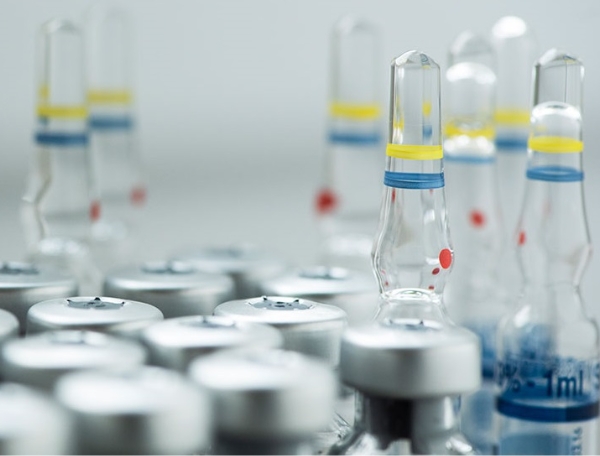


clinical research
Personalizing Stroke Recovery Interventions
Personalizing Stroke Recovery Interventions
Stroke recovery programs play a vital role in the functional recovery of patients.
More than half of the 800,000 patients suffering from a new or recurrent stroke in the United States are unsuccessful in achieving full independence. The need for a more effective approach to stroke recovery is paramount. Timea Hodics, MD, Director of the Interventional Neuro-Recovery program at Houston Methodist, is pioneering a novel, personalized approach to post-stroke rehabilitation by optimizing non-invasive brain stimulation approaches.
Each stroke is different as the blockage in blood flow to the brain can happen in several different brain regions.






Each stroke is different as the blockage in blood flow to the brain can happen in several different brain regions.






“Strokes are all different. We still do not know how to optimize stroke patients’ recovery; therefore, many stroke patients end up with significant impairments,” said Hodics. “That’s why it is crucial to understand the mechanisms underlying the functional recovery about the individual’s structural impediments of each stroke. By personalizing the treatment using our unconventional paradigm, we hope to maximize each patient’s recovery within the limitations provided by the lesion.”
Timea Hodics, MD
Hodics assists patients who have arm and leg paralysis, vascular dementia, aphasia, dementia and neurocognitive issues including depression and anxiety. In addition to standard rehabilitation approaches of speech, physical and occupational therapy; some neurologists, including Hodics, use various forms of brain stimulation as an adjuvant therapy to promote stroke recovery.
She is also investigating the effects of non-invasive vagal nerve stimulation that can be used at home to enhance motor stimulation and developing an artificial intelligence-based home rehabilitation tool for stroke patients.
Non-invasive brain stimulation can be performed using transcranial magnetic stimulation (TMS) or transcranial direct current stimulation (tDCS), both of which have potential therapeutic applications. TMS entails inducing intracranial electrical currents in the cortex with a fluctuating extracranial magnetic field. On the other hand, tDCS delivers constant electrical currents to the brain via scalp electrodes. Hodics is investigating the effects of tDCS during the early and chronic post-stroke phase. While myriad studies have focused on later phases of the post-stroke period when the patient experiences chronic symptoms, the early post-stroke phase is relatively understudied.
Strokes are all different. I have yet to see two patients who are the same. Some patients will respond well to neuromodulation, especially where the residual network is larger and better targeted, and the response will be worse in others where there is less precise targeting of a limited residual network. We still do not know how to optimize stroke patients’ recovery; therefore, many stroke patients end up with significant impairments. It is crucial to understand the mechanisms underlying the functional recovery in the setting of the individual structural impediments of each stroke. By personalizing the treatment using our unconventional paradigm, we are hoping to maximize each patient’s recovery within the limitations provided by the lesion.
Timea Hodics, MD
Director, Interventional Neuro-Recovery Program
Hodics and her team are investigating optimal stimulation methodologies that will improve brain stimulation for each individual stroke patient. Currently, fMRI offers technological advantages for studying the entire network in the brain of these patients that may lead to interesting discoveries and improved patient outcomes. Utilizing a unique method developed by her team, Hodics identifies an individual pattern of stimulation that maximizes motor function during the testing condition. The team tests this individualized neuromodulation to determine a tailored treatment plan for an individual patient.
According to the American Heart Association, post-stroke hemiparesis or cognitive impairment occurs in most stroke survivors in their first year after stroke. A better understanding of how to effectively support these patients could lead to an improved quality of life for these patients, patient care and reduced medical costs.
For further information on Dr. Hodics’ work on this topic, please see the following papers:
Belen Pascual, Timea Hodics, Quentin Funk, Matthew D Cykowski, Mohammad O Nakawah, Joseph C Masdeu. Translocator Protein 18 kDa PET Imaging Highlights Asymptomatic Isolated Cerebellar Dysplasia. Neurology. 2022 Mar 29;98(13):538-539. Doi:10.1212/WNL.0000000000200221.
Mario F Dulay, Amber Criswell, Timea M Hodics. Biological, Psychiatric, Psychosocial, and Cognitive Factors of Poststroke Depression. Int J Environ Res Public Health. 2023 Mar 30;20(7):5328. Doi: 10.3390/ijerph20075328.
Timea Hodics, Leonardo G Cohen, John C Pezzullo, Karen Kowalske, Alexander W Dromerick. Barriers to Enrollment in Post-Stroke Brain Stimulation in a Racially and Ethnically Diverse Population. Neurorehabil Neural Repair. 2022 Sep;36(9):596-602.
Doi: 10.1177/15459683221088861.
Bilal Khan, Timea Hodics, Nathan Hervey, George Kondraske, Ann M Stowe, George Alexandrakis. Functional near-infrared spectroscopy maps cortical plasticity underlying altered motor performance induced by transcranial direct current stimulation. J Biomed Opt. 2013 Nov;18(11):116003. Doi: 10.1117/1.JBO.18.11.116003.
Timea Hodics. Neurocritical Care. Arch Neurol. 2012 Nov 1;69(11):1522. Doi: 10.1001/archneurol.2012.2316.
Abanti Chattopadhyay, PhD
July 2024








